TOUGH ROLLERS: FINDING STRENGTH THROUGH DERBY
The Salt City Roller Derby league attracts women of many shapes and sizes, providing a safe space to gain strength and find community.
This page is dedicated to Professor Sherri Taylor. May she rest in peace.
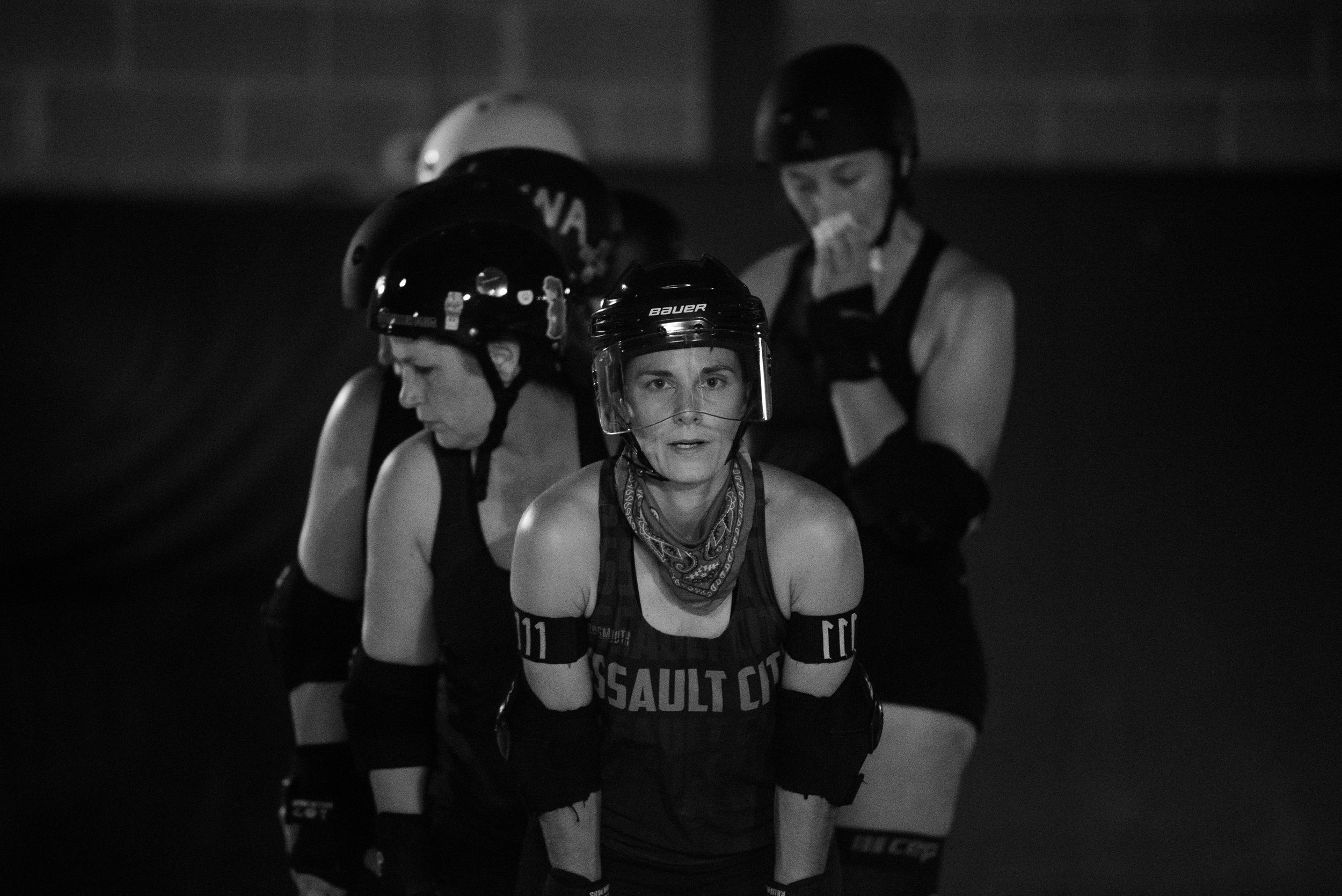


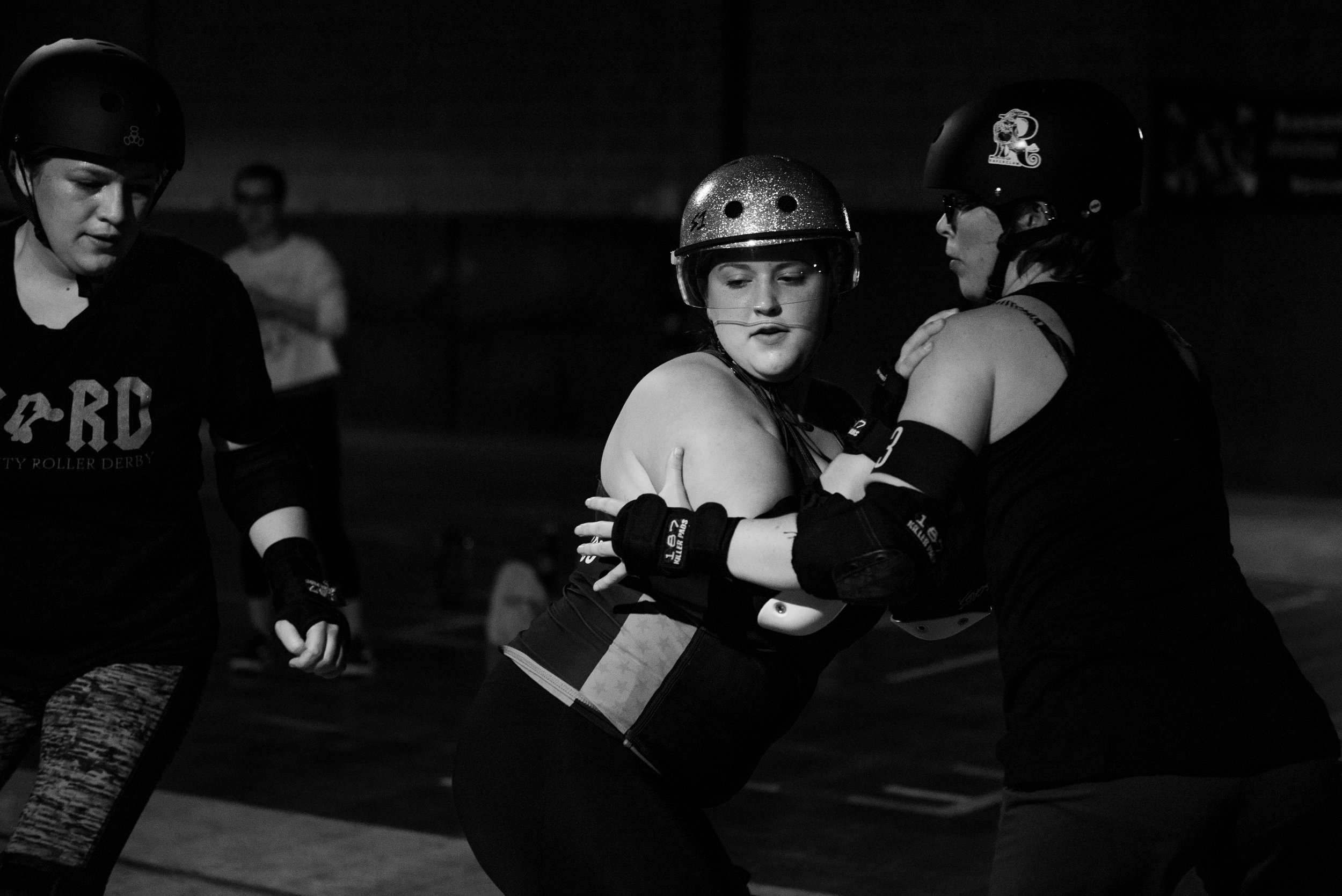

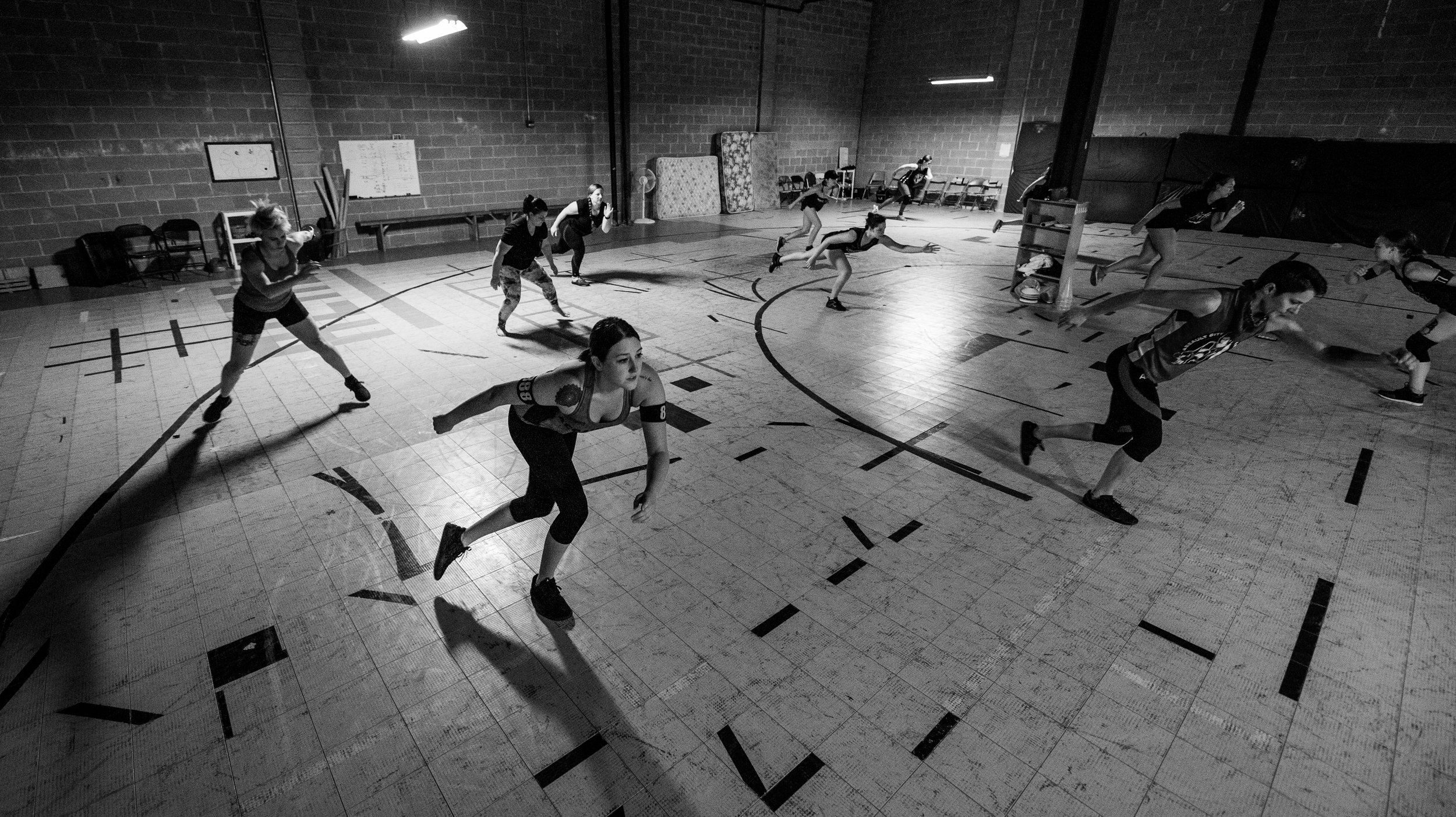

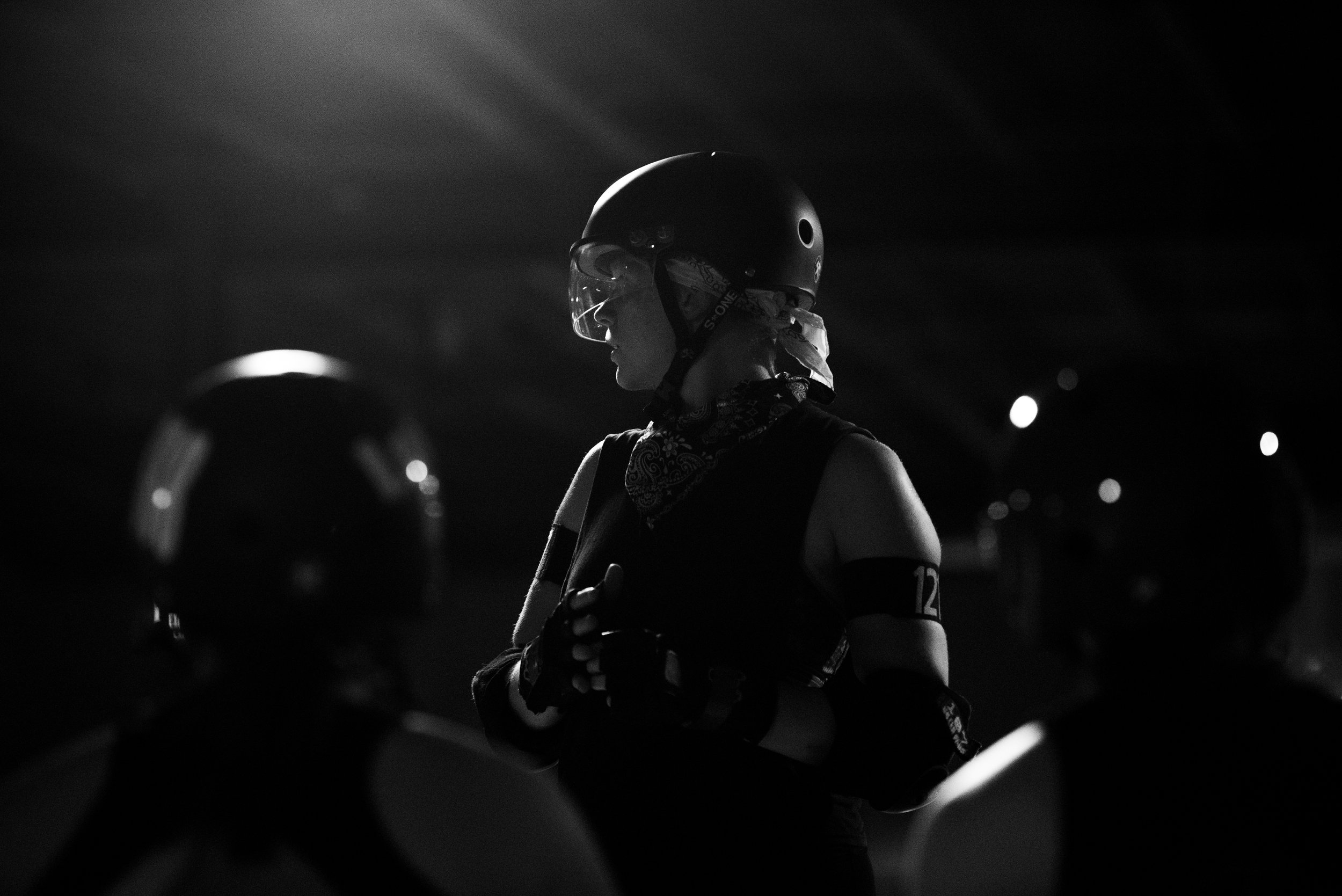


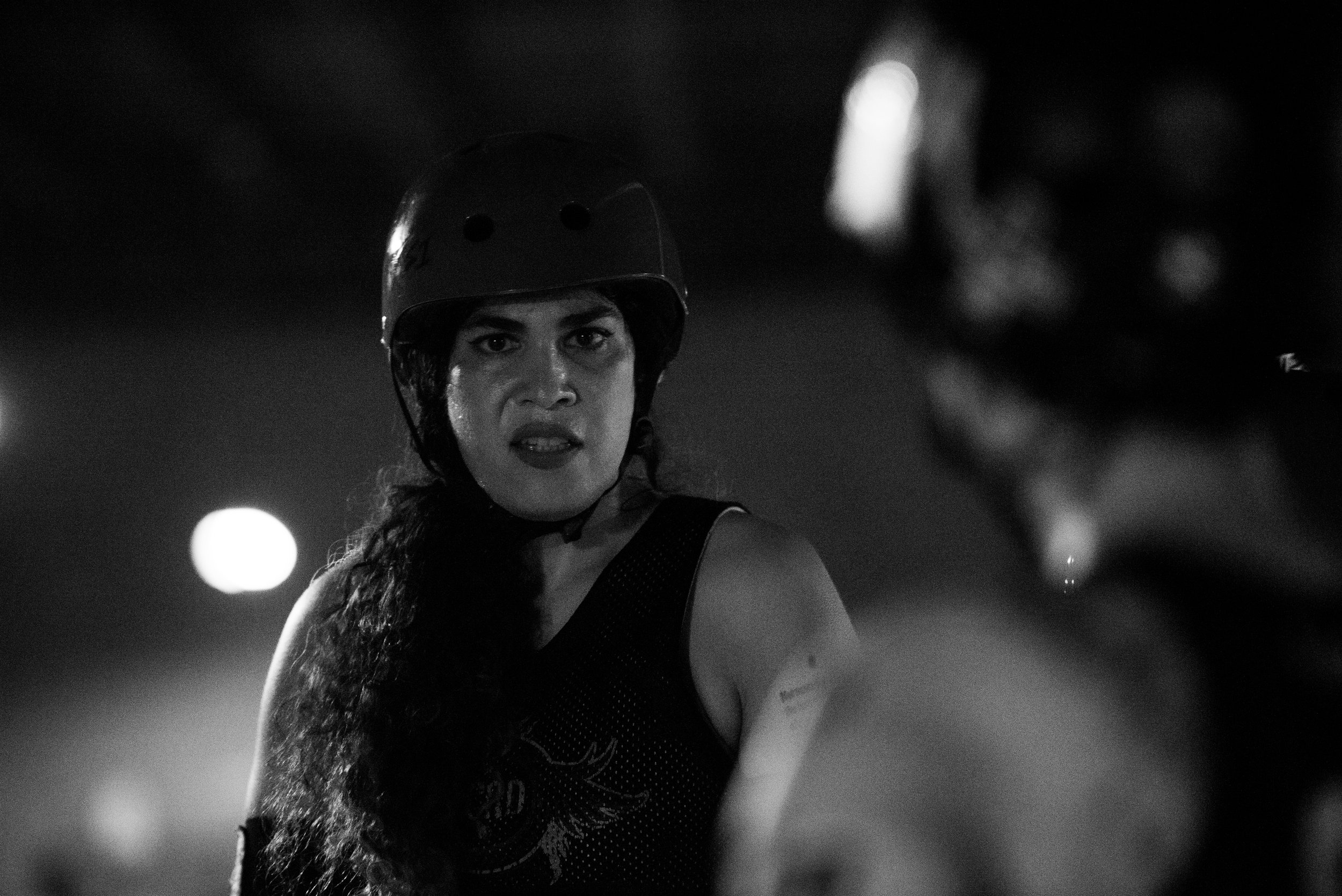
In the depths of the deserted Shoppingtown Mall is the Vault. A pack of fierce women zip past on a regulation-size track, which measures 108 feet long by 75 feet wide overall.
Under dim lights, women dressed in leggings, padding, helmets, and skates, gather each Tuesday and Thursday to methodically practice their blocking, jamming, hip whips and explosive stops to improve their chances of winning. In this sport, practice not only makes perfect, but also ensures their safety.
Along with increased strength, players receive support from a community that encourages individualism and self-expression.
“Derby is like a really big family,” said Monica “Luna Sea” Hastedt, who became interested in roller derby after watching the 2009 movie “Whip It.” “It feels like I joined like the most supportive girl gang in the world. I love the team. There’s this positive energy that even if you’re not feeling super positive, once you’re done with practice, you’re like, man, I did it.”
According to the Women’s Flat Track Derby Association, modern women’s roller derby got its start in the early 2000s, in Austin, Texas, where new leagues formed as businesses run by the athletes themselves. The sport gained popularity because it is easier to mark the flat track on flat surfaces, as opposed to the previous version of the sport, which required assembly and storage for an angled track.
Throughout two 30-minute halves, two teams field five skaters to score the most points in 2-minute periods, known as “jams.” Skaters are prohibited from using their heads, elbows, forearms, hands, knees, lower legs, or feet to make contact with opponents. They block with their chest, hips, shoulders and can target the opponent’s side and front from the upper thigh to shoulders.
Roller derby is an intense contact sport that can provide thrill-seekers a rush of adrenaline, but for some Salt City Roller Derby skaters, the game offers much more.
“I think, weirdly, derby comes in people’s lives when they might be at the lowest point,” said Sydney “Katpiss Neverclean” Schwab, 22, who has been playing since age 13. “A lot of people will say it teaches them to think about themselves and sort of care for themselves in order to have motivation to get stronger and feel better.”
Schwab’s theory could not ring truer for five-year roller derby veteran Stacey Walton.
“I was struggling with some personal things, and I knew roller derby would help,” Walton said. “One of the things I’ve been battling as a mother of two is identity issues, and I feel like it’s giving me my identity back. [I also have] body image issues, and I feel like I’m starting to get strong again, so it’s kind of one of those you break-your-body-to-save-your-soul type things.”
Although roller derby has served as an avenue for members to rebuild themselves emotionally, it also invites those who may not think they have an “athlete’s body.” Specific body types are often associated with certain sports, such as gymnastics or swimming, roller derby defies this trend and welcomes any member regardless of their shape.
“It takes all sizes. There’s a place for you anywhere on the team, which is kind of awesome, and not something I experienced anywhere else,” said Hastedt, who’s been playing the sport for almost two years. “It’s also super inclusive. If you’re non-binary, binary or female-identifying, come join roller derby. I would recommend it to anybody because it’s kind of a safe haven for people to be themselves, stretch their wings and try something new.”







